
Preface
Spring is a travel season she and he will never miss. April 8th
Departing from Dalian, they traveled through Wuhan, Nanchang, Yueyang, Chongqing, Chengdu, Luoyang, and Beijing, returning to Dalian on April 29th. A slow pace, no rush, a leisurely and relaxed way to enjoy the joy of travel—this is the kind of travel she and he pursue, a joyful and unforgettable experience.
Days 1 and 2: Dalian to Wuhan (April 8th and 9th)
On the Train
This trip was the first time they traveled entirely in sleeper berths, including both hard and soft sleepers.
From 3:31 PM on April 8th to 5:14 PM on April 9th, Dalian to Wuchang. It rained heavily the night I arrived in Wuhan, so I stayed at the hotel and didn't go out. I checked into the same hotel I stayed at last fall: Jinjiang Inn Wuhan Jianghan Road Subway Station Jiangtan Pedestrian Street. The hotel is located on Jianghan Road Pedestrian Street, close to the subway station, and has excellent transportation.

On the train. Life on the train is also part of the trip.
Day 3 Wuhan (April 10th)
Jiangtan Park, Lihuangpi Road, Jiqing Street
Lihuangpi Road boasts European-style architecture, home to the August 7th Club and the former site of the CPC Central Committee. "Early breakfast in Hubu Alley, late night snack on Jiqing Street," Jiqing Street, a popular hub for Han Chinese cuisine, attracts crowds at night.
The hotel is very close to Jiangtan Park, Huangpi Road, and Jiqing Street, making it a convenient walking distance. She held his hand and strolled in the rain. The rain, the scenery, and the emotions were like poetry, a painting, and a dream, filling her heart with a sense of beauty.
★Jiangtan Park

She was in Jiangtan Park.

He is in the Riverside Park.
★Lihuangpi Road

★Jiqing Street

I went to Jiqing Street this morning and again in the evening for a late-night snack.
Hankouli
Located within the Wuhan Garden Expo Park, Hankouli is a historic commercial street in Wuhan, boasting both Republican-era historical and cultural charm. It's a great spot for both food and photography. The clay pot soup at Xiaotaoyuan in Hankouli is delicious, and the tofu skin is also tasty. Day 4, Nanchang (April 11th) Wuhan to Nanchang: A three-hour drive from Wuhan to Nanchang. We arrived in Nanchang at noon. My first stay at a 7 Days Inn Premium Hotel. 7 Days Inns with the word "Premium" in their name are quite good.

7 Days Inn, spacious rooms with floor-to-ceiling windows, and breakfast included.
Shengjin Pagoda, Shengli Road Pedestrian Street
Shengjin Pagoda attractions include the Shengjin Pagoda and Shengjin Pagoda Food Street. Built during the Tang Dynasty, Shengjin Pagoda Food Street features antique-style arcade-style buildings.
Shengli Road Pedestrian Street, a century-old street with a European charm, serves as a haven for Nanchang residents. The pedestrian street connects to Zhongshan Road, near the August 1st Nanchang Uprising Memorial Hall and a snack street. To the east of Zhongshan Road lies the beautiful Bayi Square. In preparation for this year's August 1st Army Day celebrations, Bayi Square and the August 1st Nanchang Uprising Memorial Hall are undergoing extensive renovations and construction.
★Shengjin Pagoda and Shengjin Pagoda Food Street

Shengjin Pagoda.

Shengjin Pagoda Food Street.
★ Shengli Road Pedestrian Street

Day 5 Nanchang (April 12)
Tengwang Pavilion, Citizen Park, Qiushui Square
The main attraction in Nanchang is Tengwang Pavilion, one of the Three Great Buildings. Tengwang Pavilion is located on the banks of the Ganjiang River, with Qiushui Square facing it across the river. Citizen Park is connected to Qiushui Square.
Qiushui Square boasts Asia's largest musical fountain complex. Enjoy the riverside during the day and enjoy the musical fountains and the Ganjiang River light show at night.
Ganjiang Citizen Park, themed around the Honggutan New District Cultural Corridor, is a riverside park dedicated to public fitness and cultural heritage preservation.
★Tengwang Pavilion

Built by Li Yuanying, Prince of Teng and younger brother of Emperor Li Shimin of the Tang Dynasty, Tengwang Pavilion boasts a history of over 1,300 years. It was subsequently rebuilt and demolished 28 times throughout the dynasties, with the 29th reconstruction taking place in 1989 during the founding of the People's Republic of China.

Sculptures within the tower recreate the history of the Tang Dynasty.

Tengwang Pavilion is located on the bank of the Ganjiang River. From the pavilion, you can overlook the Ganjiang River and Qiushui Square on the opposite bank.

A view inside the Tengwang Pavilion scenic area.

Rest here before leaving Tengwang Pavilion.
★Ganjiang Citizen Park and Qiushui Square

From Tengwang Pavilion, take Metro Line 1 and arrive at Qiushui Square on the other side of the Ganjiang River, one stop away. During the day, stroll along the river and visit Ganjiang Citizen Park. At night, enjoy the musical fountain and the night view of the Ganjiang River from Qiushui Square.

Citizens exercise and have fun in this park.

Ganjiang Citizen Park is a riverside park for citizens to exercise and inherit cultural heritage.

At night, watch the musical fountain at Qiushui Square and enjoy the light show on both sides of the Ganjiang River.
Day 6, Yueyang (April 13th)
Baling Square and Bianhe Street
In the morning, take the train from Nanchang to Yueyang, a journey of just over six hours. In the evening, visit Baling Square and Bianhe Street in the Yueyang Tower scenic area.
Baling Square is located on the shores of Dongting Lake in front of the Yueyang Tower scenic area.
Bianhe Street is a replica of the ancient street and food court in front of the Yueyang Tower scenic area.

In front of the Yueyang Tower scenic area.

Baling Square. Dongting Lake is to the east of the square.

Bianhe Street.
Day 7: Yueyang, Wuhan (April 14th)
Yueyang Tower
Yueyang Tower is built on the west wall of the ancient city of Yueyang, bordering Dongting Lake to the east and overlooking the Yangtze River to the north. As the saying goes, "Dongting Lake is the most beautiful water in the world, and Yueyang Tower is the most beautiful tower in the world." Yueyang Tower, along with Yellow Crane Tower and Tengwang Pavilion, is known as one of the three most famous towers in Jiangnan (see my travelogue for the Yellow Crane Tower from last fall).
Yueyang Tower was formerly the "Yujun Tower" of the Eastern Wu during the Three Kingdoms period. It was called "Baling City Tower" during the Western Jin Dynasty and was renamed "Yueyang Tower" during the Tang Dynasty. Throughout history, Yueyang Tower was destroyed and rebuilt several times. After the founding of the People's Republic of China, it was renovated, and the expansion of the Yueyang Tower scenic area was completed in May 2007.

We arrived at the Yueyang Tower scenic area early in the morning.

The first scenery in the Yueyang Tower scenic area.

Cheers to the beauty of the scenic area.

He left a souvenir at the Yueyang Tower scenic area.


The Yueyang Tower has only three floors, but because it is built on the city wall, it still looks tall and majestic. From the tower, overlooking the lake and sky, I see two different colors. Dongting Lake, seen from here, has a yellowish hue, seemingly not very deep. From the city wall, I saw a sharp demarcation between the blue Yangtze and the lighter Dongting waters at the confluence of Dongting Lake and the Yangtze River. And last night, from Baling Square, I saw Dongting Lake still surging and majestic. The scenic area includes Nanhu Lake and Nanhu Square. Nanhu Lake is a tributary of Dongting Lake; Nanhu Square, built along the Nanhu Lake, is the largest square in Hunan Province.







The South Lake Scenic Area is beautiful and refreshing.
This concludes our trip to Yueyang. Yueyang left us with a wonderful impression. Yueyang was well worth the trip.
Wuhan Chuhe Hanjie Street
We took a bus to Wuhan at noon and transferred to Chongqing.
We waited for the bus in Wuhan for over five hours, leaving us with half a day to explore. We visited Chuhe Hanjie Street.
We visited Chuhe Hanjie Street last fall while traveling in Wuhan, but the heavy rain didn't allow us to fully enjoy it, so we were able to revisit it this time.
We took a bus to Chongqing in the evening.

A Xinjiang girl dances gracefully in front of the Xinjiang Culture Restaurant on Han Street.
Day 8, Chongqing (April 15th)
Chaotianmen
Arrived in Chongqing at noon and checked into the 7 Days Premium Hotel Chongqing Jiefangbei Pedestrian Street. The hotel is near Exit B5 of Linjiangmen Station on Metro Line 2, close to Jiefangbei Pedestrian Street, Snack Street, and Jiaochangkou.
We sampled several snacks at the snack street; the famous hot and sour noodles were a bit spicy, so it took some getting used to.
After strolling through the streets, we walked all the way to Chaotianmen.

Arrived in Chongqing.

Arrived at Chaotianmen.
Chaotianmen is one of Chongqing's ancient city gates and the largest water wharf in Chongqing, marking the estuary where the Jialing River meets the Yangtze River. Above Chaotianmen is Chaotianmen Square, which, from a distance, resembles a giant ship, earning it the nickname Chongqing's Titanic. From Chaotianmen Square, you can see the distinct confluence of the yellow Yangtze and green Jialing Rivers, creating a unique spectacle. To the left of Chaotianmen lies the Jialing River. From Chaotianmen Square, the Qiansimen Jialing River Bridge is magnificent. The sight of the two river cruise ships and the scenery along both sides of the Jialing River together create a stunning night scene at Chaotianmen Wharf. This is the night view of the Yangtze River and its banks to the right of Chaotianmen. On our way back to the hotel that evening, we passed Jiefangbei Pedestrian Street, a bustling commercial street. Day 9, Chongqing (April 16th) Huguang Guild Hall, originally built in 1759 in the auspicious Dongshuimen area, was built by people from Hunan and Hubei to connect with their hometowns. This exquisitely decorated building is the largest ancient guild hall complex in China. It is located in the Dongshuimen area. The Dongshuimen Bridge passes through the north side of the guild hall.




★Chongqing People's Grand Auditorium


Taking a photo in front of the Grand Auditorium.

Across from the Great Hall is the China Three Gorges Museum.
★ Zhongshan 4th Road

A short walk from the Great Hall is Zhongshan 4th Road.
This is the Zhongshan Cultural Industry Park on Zhongshan 4th Road, where we took a short break. Guiyuan Garden. The former office site of the Chinese Communist Party during the Chongqing Negotiations. The second-floor balcony of the former office site.

Inside the Dai Li Residence.

Zhou Residence, No. 50 Zengjiayan, the former site of the Eighth Route Army Chongqing Office. During the Anti-Japanese War, the Nationalist Government once resided in this courtyard. Guanyin Bridge: After leaving Zhongshan 4th Road, take Metro Line 3 for two stops to Guanyin Bridge. Guanyin Bridge is a bustling commercial district, a great place for shopping, dining, and entertainment. Guanyin Bridge: After leaving Zhongshan 4th Road, take Metro Line 3 for two stops to Guanyin Bridge. Guanyin Bridge is a bustling commercial district, perfect for shopping, dining, and leisure.

Guanyinqiao Food City has a lot of snacks. The Zhengxin chicken cutlet here is pretty good.

We had a blast at Guanyinqiao.
As night fell, they couldn't help but dance to the music of the swan fountain. They recorded her graceful dance moves with their phone, saving them forever on their phone and computer.
Day 10, Chongqing (April 17th)
Nanbin Road
Located in Nan'an District, at the foot of Nanshan Mountain and on the south bank of the Yangtze River, it's known as the "Bund of Chongqing."
You can reach it by taking the Yangtze River Sudao Trail, or by taking Metro Line 6, transferring to Bus No. 354 at Shangxin Street, and getting off at Wuyuan.

Nanbin Road.

Nanbin Road borders the Yangtze River to the north, with Yuzhong District on the opposite bank.

Nanbin Road is modern and beautiful.

At teahouses along the river, you can enjoy tea, play mahjong, and enjoy the river view, from which you can appreciate the long-standing Bayu culture and dock culture.

A bronze statue on the riverside trail.

Sculpture.

Scenery along the riverbank of Nanbin Road.

Dongshuimen Yangtze River Bridge.
Completed and opened to traffic on March 31, 2014, the Dongshuimen Bridge consists of two levels: the upper level houses pedestrians and a car lane, while the lower level connects to Metro Line 6. The Dongshuimen Yangtze River Bridge and the Qiansimen Jialing River Bridge are known as "sister bridges." Their exquisite design and unique construction methods are unique worldwide.
A short distance from the Dongshuimen Bridge, you can see Chaotianmen Wharf on the opposite bank. The night view of the two rivers from there is undoubtedly breathtaking. However, I gave up on the night view here because I was going to Hongyadong that evening. Similarly, I didn't go to Nanshan Yikeshu for the night view either. This is the former site of the US Embassy, located under the Dongshuimen Bridge. It is now the "American Embassy Bar."

The Yangtze River Cableway, at the Nanbin Road end. Hongya Cave boasts over 2,300 years of history, and the Hongya Cave Folk Customs Area, a scenic spot, was one of eight major public welfare projects launched by the Chongqing Municipal Government in 2005. The scenic area, themed after the "stilted houses" of the Ba-Yu tradition, is nestled against the mountainside and along the river. Its unique architectural style, blending classic and modern elements, Ba-Yu culture with international influences, and its modern business model integrating shopping, cultural leisure, dining, and entertainment, has become a hallmark of Chongqing. [Image:

We've arrived at Hongya Cave. This is the back of Hongya Cave, at the top.] Hongya Cave has ten floors, and you can take the elevator to any floor. To view key sights like "Hongya Dicui," descend to the third floor and enter from the left. From here, you can also walk directly to the Qiansimen Jialing River Bridge and view Hongya Cave from the bridge. The Qiansimen Jialing River Bridge is particularly beautiful at night. On the Qiansimen Bridge.

A panoramic view of Hongyadong taken from Qiansimen Bridge.

Take the elevator down to the third floor, walk along the shops to the left, and you will enter the dreamlike "Hongya Dicui" viewing area.

This is the staircase leading to the landscaped area between the third and fourth floors.

She left behind a precious memory in front of the "Hongya Dicui".




One of the street scenes of Ciqikou Ancient Town.








E'ling Park
E'ling Park is a private garden built in 1909. It was formerly known as Li Garden and Yi Garden.
E'ling Park, a culmination of garden art, seamlessly blends the natural landscape of E'ling with artificial gardens. It has attracted numerous celebrities, military and political leaders to reside here. Britain, Turkey, Australia, and other countries have established embassies here. During the War of Resistance Against Japanese Aggression, Chiang Kai-shek and his wife even spent half a year in the park's "Flying Pavilion." Today, the park has become a popular destination for local residents, where they enjoy strolling, drinking tea, playing chess, mahjong, and other leisure activities.

Take Metro Line 1 and get off at E'ling Station. This is the highest point in E'ling Park. Eling Park is one of the best places to enjoy the beautiful scenery of Chongqing, especially at night. During the War of Resistance Against Japanese Aggression, Chiang Kai-shek and his wife lived here.

Meeting a beautiful woman in Eling, it’s a match made in heaven.

The slow pace of life of Chongqing people is enviable. He's a Go fanatic, and the more he plays, the more he feels like he doesn't want to leave. This is the last day of our Chongqing trip, and tomorrow morning we'll depart for Chengdu. Chongqing has given us joyful moments, and we'll remember this beautiful mountain city. Goodbye, Chongqing. Day 12, Chengdu (April 19th) Kuanzhai Alleys and Narrow Alleys This morning, we traveled from Chongqing to Chengdu and checked into the Home Inn near Luomashi Subway Station. In the afternoon, we explored Kuanzhai Alley, Tianfu Square, and Chunxi Road. Kuanzhai Alleys and Narrow Alleys comprise the Wide Alley, the Narrow Alley, and the Well Alley. Kuan Alley represents urban culture, Narrow Alley represents a slower pace of life, and Well Alley represents a new way of life.










Tianfu Square is located in the heart of Chengdu, surrounded by high-rise buildings. It houses the famous People's Shopping Mall, the Provincial Museum, the library, and the Art Gallery. It also boasts a sunken plaza, lush lawns, a musical fountain, and nighttime lighting. Modern and beautiful, it is a key leisure plaza in Chengdu.
Chunxi Road, built in 1924, is a nationally renowned commercial street, home to a variety of brand-name stores, time-honored Chinese shops, and a variety of famous snacks.
★Tianfu Square

A unique square with flowers and green spaces.



The sunken plaza (underground shopping mall) on Tianfu Square.
★Chunxi Road



★Qintai Road Antique Street

She seems to be driving forward.

Is he very happy at this moment?


★Baihuatan Park

Canglang Bridge spans the Jinjiang River.

The gardens offer a variety of views, each with its own unique charm.


I'm in a great mood.

On the way to Du Fu's Thatched Cottage, we passed by Huanhua Creek and took a photo in front of the stone tablet that reads "Huanhua Liuyun".
★Du Fu's Thatched Cottage

Such joy, leaving the joy in our memories.
Wuhou Temple, Jinli Ancient Street
Chengdu's Wuhou Temple consists of three parts: the cultural relics area, the garden area, and the Jinli Folk Customs area. Before the Tang Dynasty, the Wuhou Shrine served as a shrine to Zhuge Liang. During its reconstruction in the early Ming Dynasty, the shrine was incorporated into Liu Bei's "Han Zhaolie Temple." The main structure of the shrine was rebuilt during the reign of Emperor Kangxi of the Qing Dynasty. Jinli Ancient Street, known as the folklore area for the Wuhou Poem, borders the Jinjiang River to the north, overlooks the Rainbow Bridge to the east, and is adjacent to the Wuhou Shrine. It is the oldest and most commercially vibrant ancient street in Western Sichuan. It embodies the essence of Chengdu, showcasing Sichuan's folk customs and cultural characteristics. Its stunning nightscape has earned it the nickname "Chengdu's version of the Qingming Shanghe Tu."
★Wuhou Temple


The Three Heroes of Peach Garden.
★Jinli Ancient Street







Fourteenth Day Chengdu (April 21)
Wenshu Monastery, Wenshu Fang
Wenshu Monastery is a Buddhist temple. Wenshu Fang in front of Wenshu Monastery is an antique street from the Tang and Song Dynasties.
★文殊院




★文殊坊



Sichuan University
Sichuan University is one of the ten most beautiful campuses in China. This is the Wangjiang Campus of Sichuan University.




Wangjiang Tower Park
Wangjiang Tower Park is located on the south bank of Jinjiang River. It was built in the Ming and Qing Dynasties to commemorate the famous female poet Xue Tao of the Tang Dynasty. There are ancient buildings such as the famous Wangjiang Tower in the park, as well as cultural relics such as Xue Tao Memorial Hall. Xue Tao loved bamboo all his life. Later generations planted bamboos all over the garden. With the collection of famous bamboos, it was also called "Bamboo Park".









Chongli Pavilion is the original name of Wangjiang Tower, and Yulou Pavilion is tall and beautiful.

Zhuo Jin Tower. Zhuo (sound zhuo) means washing. Brocade weavers in the Han Dynasty put the brocades into the Jinjiang River for washing, and called the Jinjiang River Zhuojinjiang. This is how the Zhuojin Tower got its name.
The Zhuojin Tower was built in the Jiaxing period of the Qing Dynasty. It is shaped like a boat and was built to commemorate Xue Tao's farewell to his beloved Yuan Zhen on the Jinjiang boat.
Zhuojin Tower is second only to Chongli Pavilion in the Wangjiang Tower ancient building complex.
Jiuyan Bridge
Jiuyan Bridge was built in the Ming Dynasty. It is the largest stone arch bridge on the Jinjiang River and was rebuilt in 2001. The Anshun Covered Bridge, not far away, was built in the Qing Dynasty. Compared with Jiuyan Bridge, Anshun Covered Bridge is more beautiful and eye-catching.
On both sides of Jiuyan Bridge are night markets and bar streets, which are full of lights at night and are the nightlife places for Chengdu people.

Jiuyan Bridge was built in the Ming Dynasty and rebuilt in 2001.

This is the Anshun Covered Bridge, which is very close to the Jiuyan Bridge. The Anshun Covered Bridge was built during the Kangxi period of the Qing Dynasty and rebuilt after liberation. It is antique and has exquisite architecture. There are high-end restaurants and leisure and entertainment venues on the bridge. It is a landscape bridge loved by domestic and foreign tourists.

On both sides of Jiuyan Bridge are night markets and bar streets.


Anshun Covered Bridge. The poem about the covered bridge says, "The magpie bridge is the most emotional couple in ancient times; the covered bridge is the most affectionate one for lovers all over the world!" I hope this bridge will be a sentimental bridge.

When the covered bridge is associated with love, it will give people unlimited reverie. At this moment, he held her hand and walked onto the covered bridge. At this time, a feeling of sweetness and happiness arose in their hearts, and this feeling was indescribable in any words.

The other end of the Anshun Covered Bridge.

The night market and bar street at nightfall.


Night view of the bridge and the other side.
Day 15 Chengdu (April 22)
Huanglongxi Ancient Town
Huanglongxi was called Chishui in ancient times. Jinjiang River (also known as Fuhe) runs through the ancient town and is joined by Luxi River. It is a thousand-year-old land and water dock. During the Three Kingdoms period, Zhuge Liang stationed troops and herds horses here, and Huanglong River has become increasingly prosperous since then. Huanglongxi has a long history and beautiful scenery. It is a famous tourist attraction with a unique style.
There is a passenger transport station in Huanglongxi Ancient Town, and the dedicated bus line leads directly to Chengdu Huayang Passenger Transport Station, making the transportation more convenient.







Dragon Neck Waterfall.



Day 16 Luoyang (April 23)
It takes more than 20 hours to drive from Chengdu to Luoyang. We arrived in Luoyang in the evening and checked into Jinjiang Inn Luoyang Railway Station. In the evening, go to Lijingmen and Luoyang Old Market.
Lijingmen and Laoji
Lijingmen is the west gate of the ancient city of Luoyang and was first built in the Sui Dynasty. Laoji is connected to Lijingmen and was the most prosperous area in Luoyang City in ancient times.

On the road in front of the city gate.

The exterior view of Lijing Gate and the city wall seen from the highway.

Beautiful Lijingmen. Outside the city wall is a moat, and the suspension bridge in front of the city gate has been replaced by a stone bridge.

After entering the Lijing Gate, there is a city wall. On the tower on one side of the city wall is the Tianhou Palace, with the inscription "Auspicious Clouds and Bright Moon" on the city gate.

On the other side of the city, there are the Nine Dragon Hall and the Xianliang Temple, and the inscription on the wall is "Hefeng Shangri".

Laoji is right after Lijingmen. Laoji is a night market, and most shops are closed during the day.
Lijingmen and Laoji are both beautiful at night. Many scenic spots are best visited at night, such as Optics Valley and Jiqing Street in Wuhan. Some attractions are suitable for visiting at night, which should be noted when planning.
Day 17, Luoyang (April 24)
Mingtang and Heaven
Mingtang is the Temple of the Son of Heaven, a place where ancient emperors and Mingzheng sects held sacrifices, court meetings and large-scale ceremonies.
Luoyang Mingtang was built after Wu Zetian became emperor. Since then, higher and larger heavens have been built. Heaven is a place where the Buddha is enshrined.
Wu Zetian mainly lived in Luoyang during her reign. The most exciting chapters of her life were written in Luoyang, and they all took place in this splendid Mingtang.
The Anshi Rebellion destroyed Mingtang Paradise. The current Mingtang Paradise was rebuilt on the site of the ancient Mingtang in 2012, except that the Wuzhou Mingtang, which was dedicated to the Wu Zetian tribe, was changed to the Tangmingtang, which was dedicated to the ancestors of Li and Tang.

★Mingtang


The splendid Mingtang. The exquisite and gorgeous architecture is famous both at home and abroad.



Luoyang City during the Sui and Tang Dynasties.
★Paradise


He loves the history of the Sui and Tang Dynasties, so he takes this as a souvenir.

The murals of all nations coming to dynasty show the glorious history of the Tang Dynasty.

Wangcheng Park
Wangcheng Park was built on the ruins of the King's City in the Eastern Zhou Dynasty. It spans both sides of the Jian River and is connected by an imitation jade arch bridge in the middle. It is a large comprehensive park and the main venue of previous Peony Flower Fairs.


The blooming period has passed, and there are not many flowers left in the flower beds.

Jianhe.

The imitation jade arch bridge connecting the two sides of the Jian River.

Wangcheng Park is the last attraction in Luoyang. Longmen Grottoes is also a famous attraction in Luoyang, but we didn’t go there. Take the bus to Beijing in the evening.
Day 18 Beijing (April 25)
It took more than ten hours to drive from Luoyang to Beijing. We arrived in Beijing at 5:30 in the morning and checked into Jinjiang Inn Beijing Guangqu Branch. Then go to the Forbidden City, Jingshan Park and Qianmen Street.

Leave a souvenir in Tiananmen Square.
Forbidden City Museum
The Forbidden City, the Forbidden City, was built in 1406 during the Ming Dynasty. It has been a dream for many years to take a walk around the "Imperial Palace". Today I got my wish, and I feel very lucky. It was almost May Day, and the control in front of Tiananmen Square was tightened, so I had to wait for a long time to go through the security check.

Enter from Tiananmen Jinshui Bridge and arrive in front of the Forbidden City. This is the south gate of the Forbidden City, the Meridian Gate.

When you enter the Forbidden City from the Meridian Gate, you will see a magnificent and beautiful picture. The Forbidden City is magnificent.
The tall and majestic Hall of Supreme Harmony in the middle is the place where the emperor ascended the throne, worshiped heaven and held grand ceremonies.

Take a commemorative photo in front of the Hall of Supreme Harmony.

Inside the Zhonghe Hall.
The Hall of Zhonghe is the place where the morning dynasty is held and where the emperor rests and receives worship before the ceremony.

Qianqing Gate.

Inside the Qianqing Palace.
Qianqing Palace is the emperor’s bedroom.

Inside Jiaotai Hall.
The Jiaotai Hall is where the emperor and his concubines lived.

Kunning Palace is the queen's bedroom.

Royal Garden.

The peonies here are still in full bloom. The flower viewing period I missed in Luoyang was made up for in the palace.
Jingshan Park
Come out of the north gate of the Forbidden City (Shenwu Gate) and cross the road to Jingshan Park.
Jingshan Park is an imperial garden and royal garden of the Yuan, Ming and Qing dynasties, with a history of more than 800 years.


Qianmen Street
Qianmen Street is an alley in Beijing, an ancient commercial street, a bar street, and a night market.




Day 19 Beijing (April 26)
Visited Nanluogu Lane, Yandai Xiejie, Prince Gong's Mansion and Houhai.
Nanluoguxiang
Nanluoguxiang was built in 1267 as a hutong courtyard in the Yuan Dynasty. Ancient street, bar street.



Qi Baishi’s Former Residence Memorial Hall. Qi Baishi's precious works are on display in the museum.

Yandaixie Street
Yandaixie Street is located in the Shichahai Historical and Cultural Reserve. It is an ancient commercial street that mainly sells smoking sets, calligraphy and painting, and antiques.



Yandai Xiejie is right on the front coast. The Qianhai seen from the exit of Yandai Xiejie is very beautiful.

Yandaixie Street is at Qianhai Yinding Bridge. Yinding Bridge is the boundary between Qianhai and Houhai.
Across the bridge is Houhai, but instead of going to Houhai at this time, we went to Prince Gong’s Mansion and left Houhai to visit in the evening.
Prince Gong’s Mansion
Prince Gong’s Mansion is located on Qianhai West Street, a geomantic treasure land. It was originally the private residence of He Kun and was later given to Prince Gong Yixin by the Empress Dowager Cixi.
Prince Gong’s Mansion is grand and beautiful, half mansion and half garden. It perfectly integrates northern architecture with Western architecture, Jiangnan gardens and classical gardens. It is a highly valuable work of art.





Houhai
Houhai is part of Shichahai. It was the water area during the Dadu period of the Yuan Dynasty 700 years ago. At that time, the coast of Houhai was full of restaurants, singing stations and shops and workshops, and it was a prosperous commercial district of Dadu.
The sunset over Houhai is beautiful, and the bar street night is even more intoxicating. Starting every evening, crowds gather here to enjoy the beautiful scenery and enjoy the joy of nightlife.







Day 20 Beijing (April 27)
Visit Beihai Park, Wangfujing Street and shop.
Beihai Park
Beihai Park is a royal garden with a long history. It is famous both at home and abroad for its numerous pavilions and cultural relics, exquisite garden art, beautiful lakes and mountains, and the iconic white pagoda building. It is the most exciting part of the Shichahai Scenic Area.



Nine Dragon Wall.


Haopujian - one of the gardens within the garden.
Wangfujing Street
Wangfujing Street is a famous commercial street with hundreds of years of history and is the "Golden Street" of Beijing. I bought specialties from Beijing here.

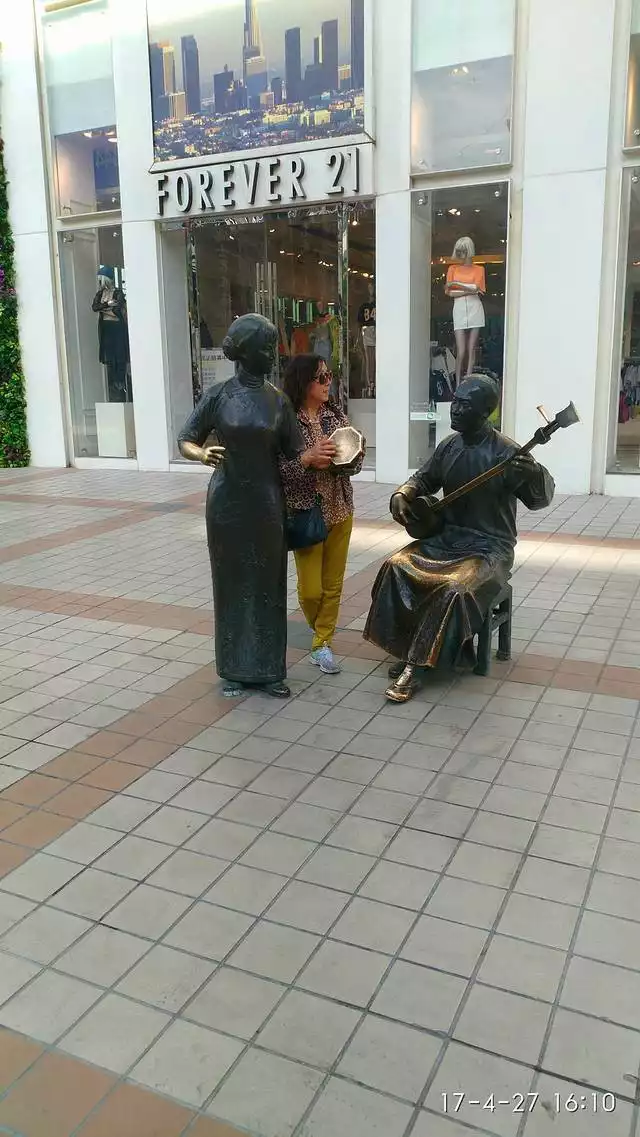
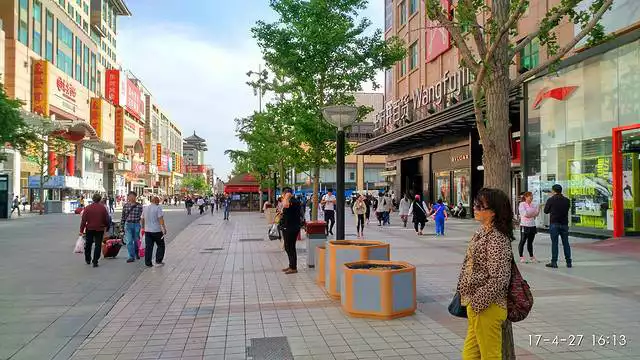
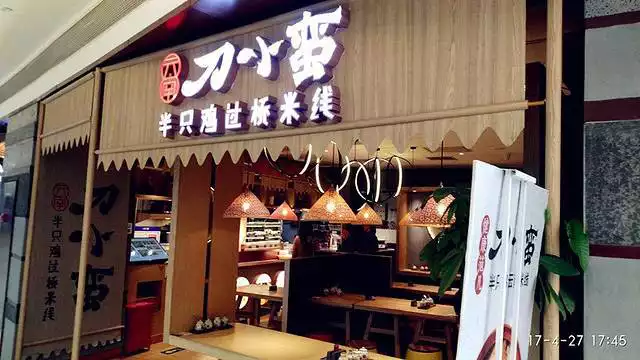
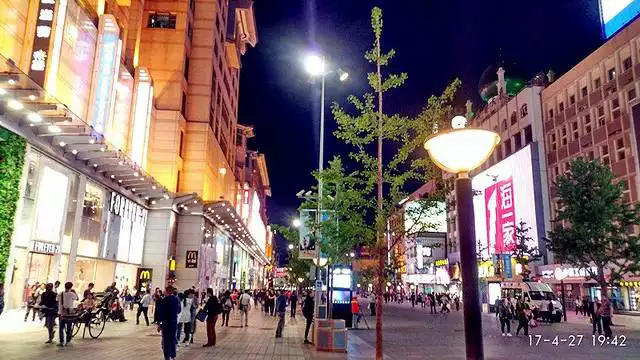
Day 21 Beijing (April 28)
Summer Palace
This is the last attraction in Beijing and the last attraction of this trip. Drive back to Dalian in the evening.
The Summer Palace is the royal palace of the Qing Dynasty. It has Kunming Lake and Wanshou Mountain. It is a large-scale landscape garden and a world-renowned tourist attraction.
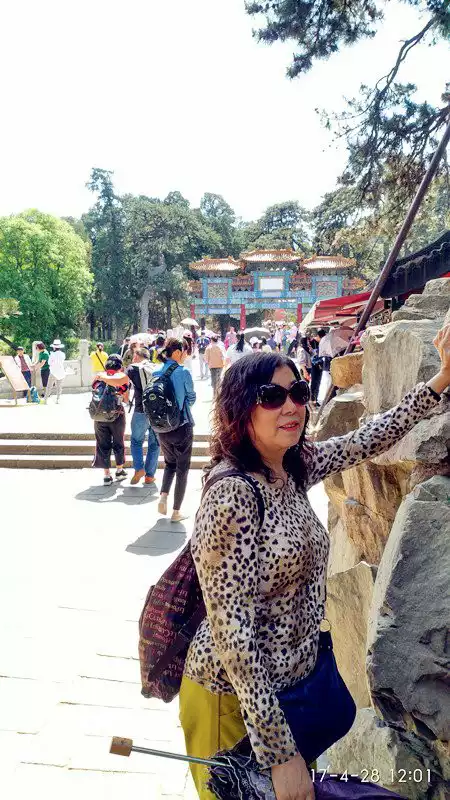
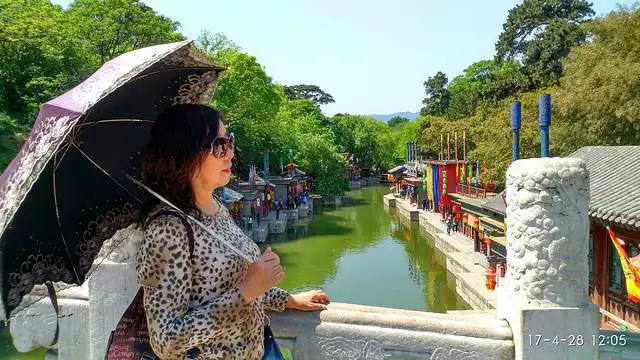
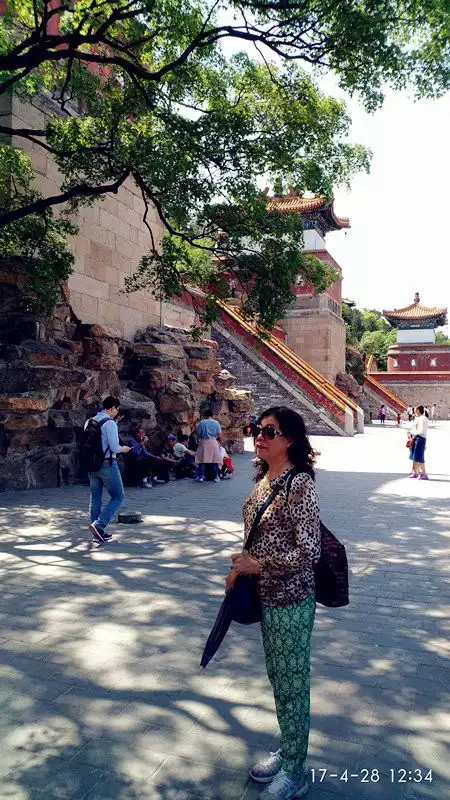
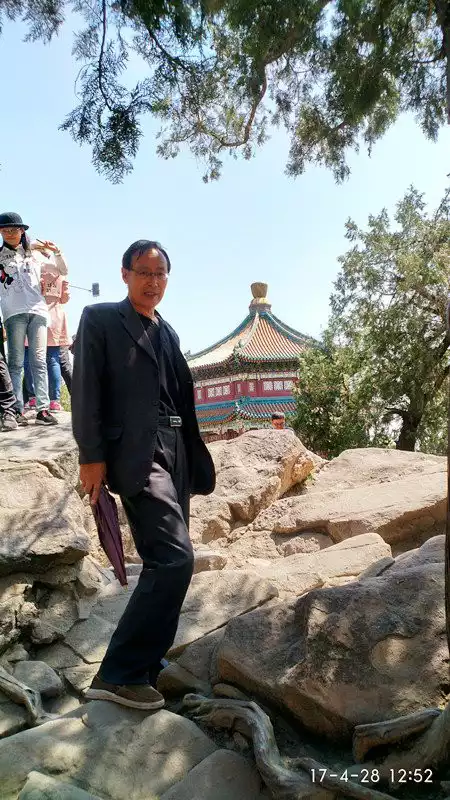
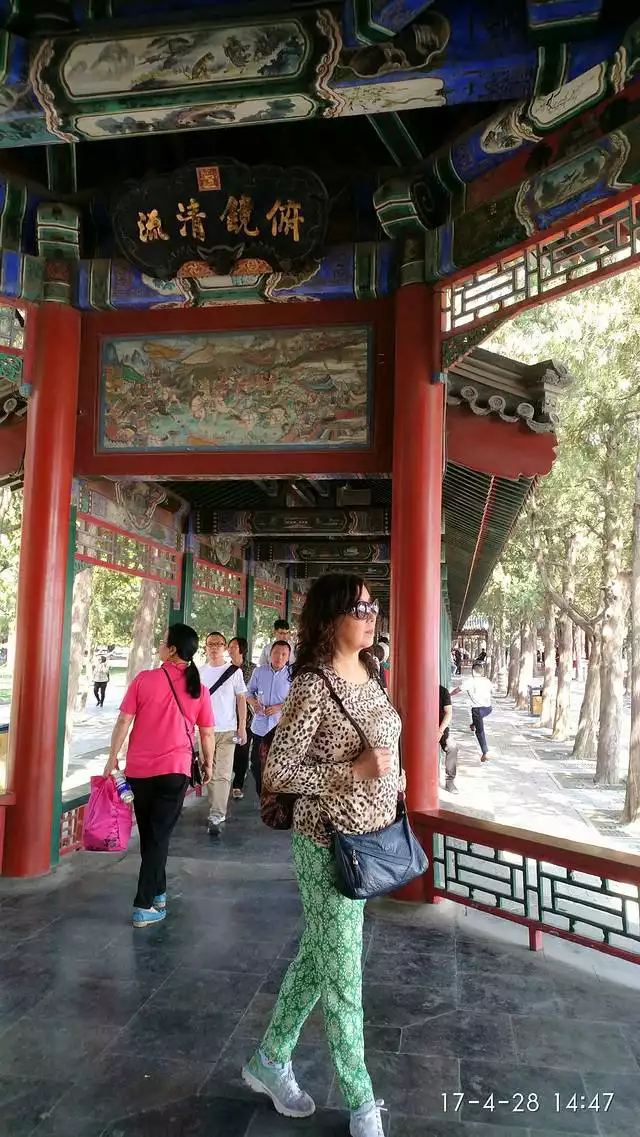
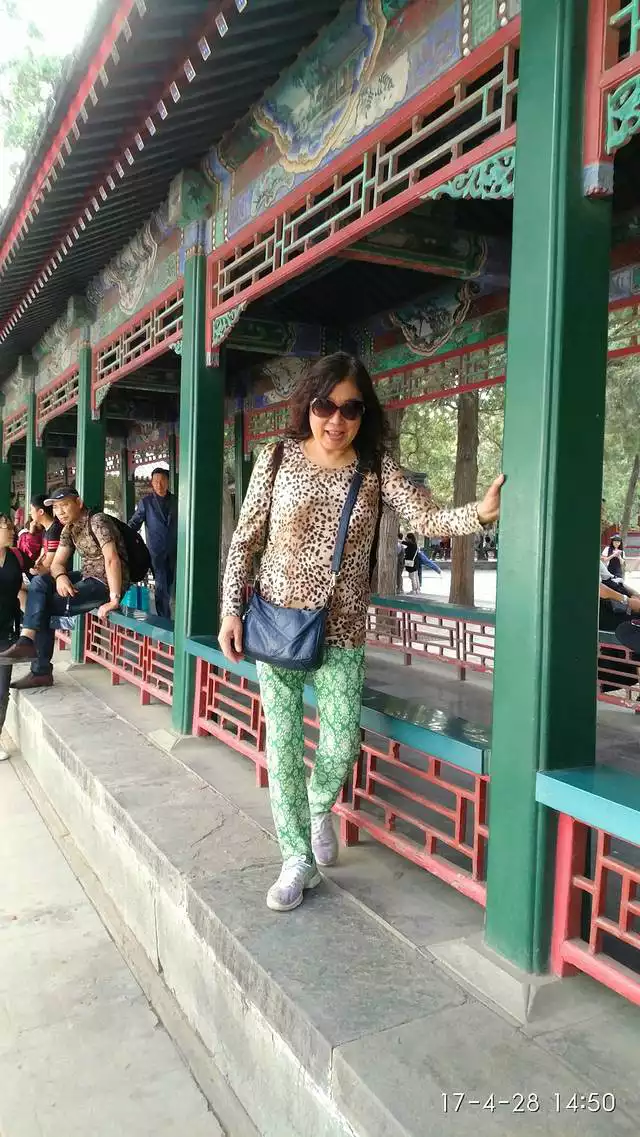
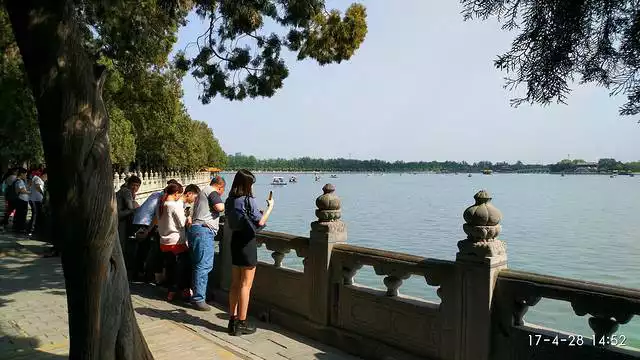
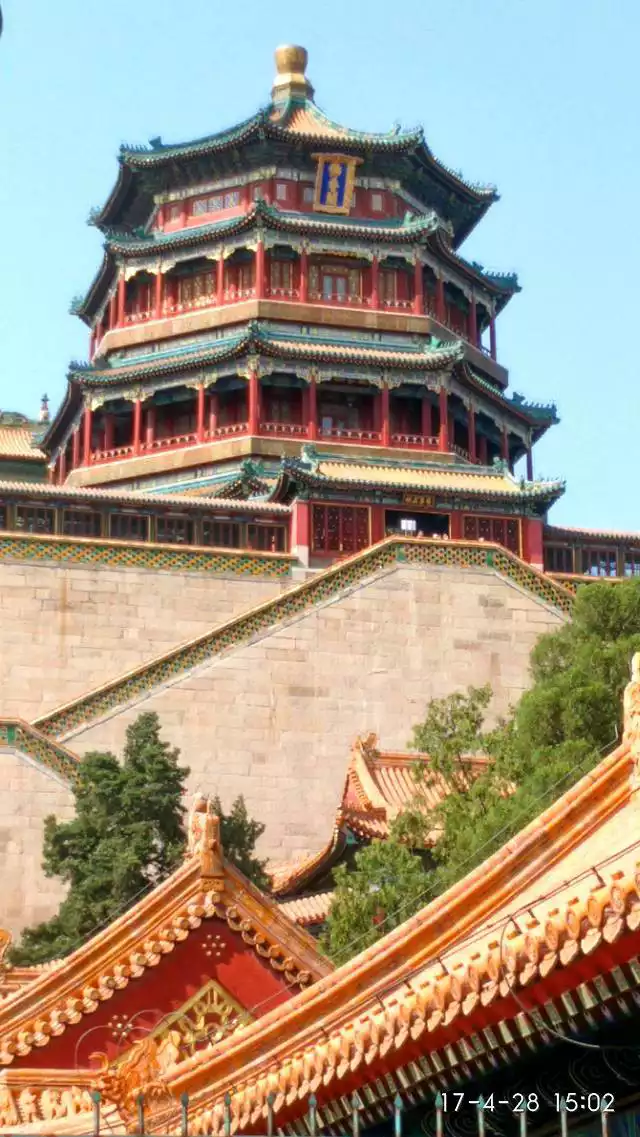

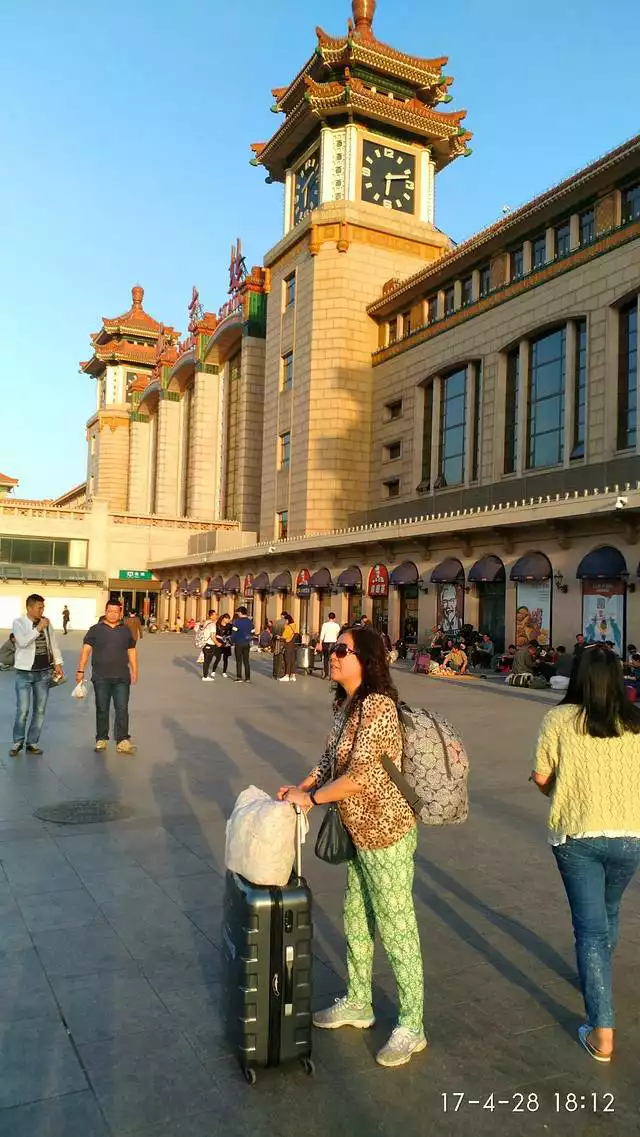
Beijing Railway Station. Take the bus back to Dalian in the evening.
At this point, this year’s spring tour is all over. She recalled the process of traveling, and scenes of happy moments appeared before her eyes...
She wanted to keep the happiness in her memory, forever and ever.
She is also eagerly looking forward to the next trip, hoping that it will be autumn, under the golden sunshine, traveling happily with him.
Number of days: 2 days, Average cost: 1,000 yuan, Updated: 2022.07.11
Number of days:3 days, Average cost: 4,000 yuan,
Number of days:4 days, Average cost: 5,000 yuan, Updated: 2022.06.30
Number of days:3 days, Average cost: 2000 yuan,
Number of days: 2 days, , Updated: 2020.07.02
Number of days:3 days, Average cost: 3000 yuan,